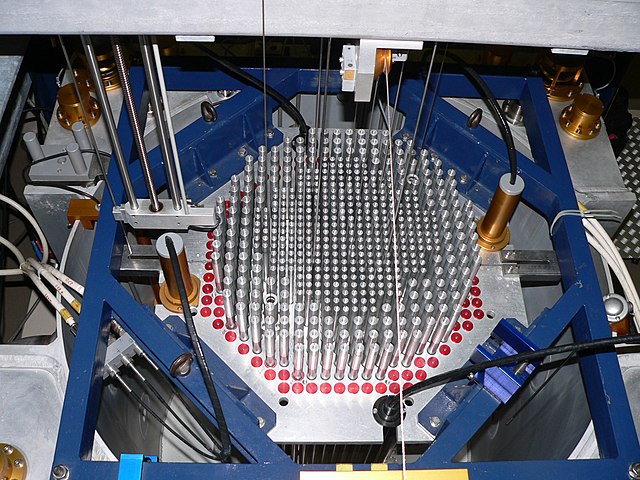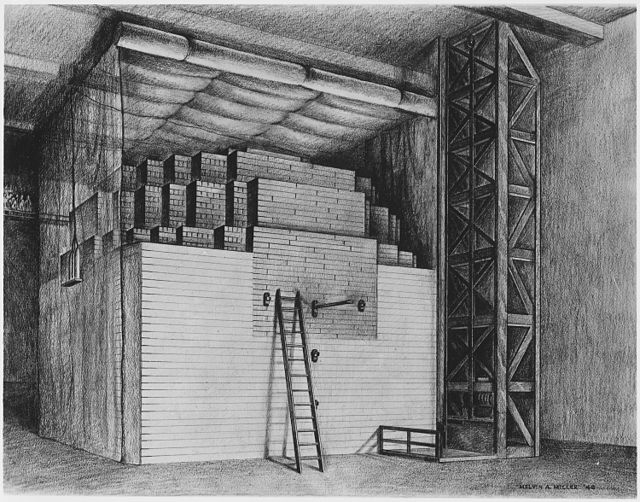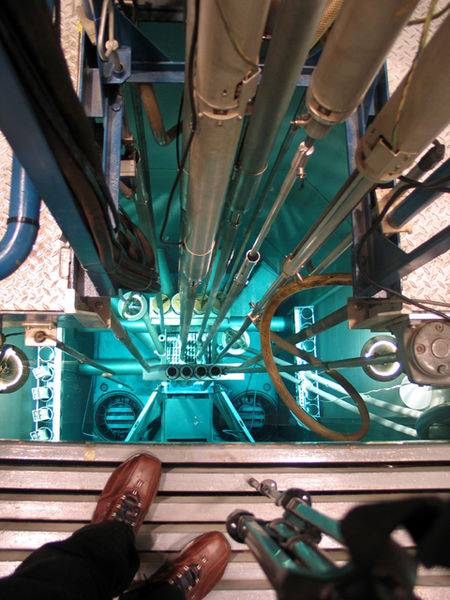Advanced Gas-cooled Reactor
The Advanced Gas-cooled Reactor (AGR) is a type of nuclear reactor designed and operated in the United Kingdom. These are the second generation of British gas-cooled reactors, using graphite as the neutron moderator and carbon dioxide as coolant. They have been the backbone of the UK's nuclear power generation fleet since the 1980s.
AGR power station at Torness
Dungeness B AGR power station, with a different outward appearance to most AGRs, consequential to multiple build companies being used
The two power stations with four AGRs at Heysham
A nuclear reactor is a device used to initiate and control a fission nuclear chain reaction or nuclear fusion reactions. Nuclear reactors are used at nuclear power plants for electricity generation and in nuclear marine propulsion. Heat from nuclear fission is passed to a working fluid, which in turn runs through steam turbines. These either drive a ship's propellers or turn electrical generators' shafts. Nuclear generated steam in principle can be used for industrial process heat or for district heating. Some reactors are used to produce isotopes for medical and industrial use, or for production of weapons-grade plutonium. As of 2022, the International Atomic Energy Agency reports there are 422 nuclear power reactors and 223 nuclear research reactors in operation around the world.
Core of CROCUS, a small nuclear reactor used for research at the EPFL in Switzerland
The Chicago Pile, the first artificial nuclear reactor, built in secrecy at the University of Chicago in 1942 during World War II as part of the US's Manhattan project
Lise Meitner and Otto Hahn in their laboratory
NC State's PULSTAR Reactor is a 1 MW pool-type research reactor with 4% enriched, pin-type fuel consisting of UO2 pellets in zircaloy cladding.







